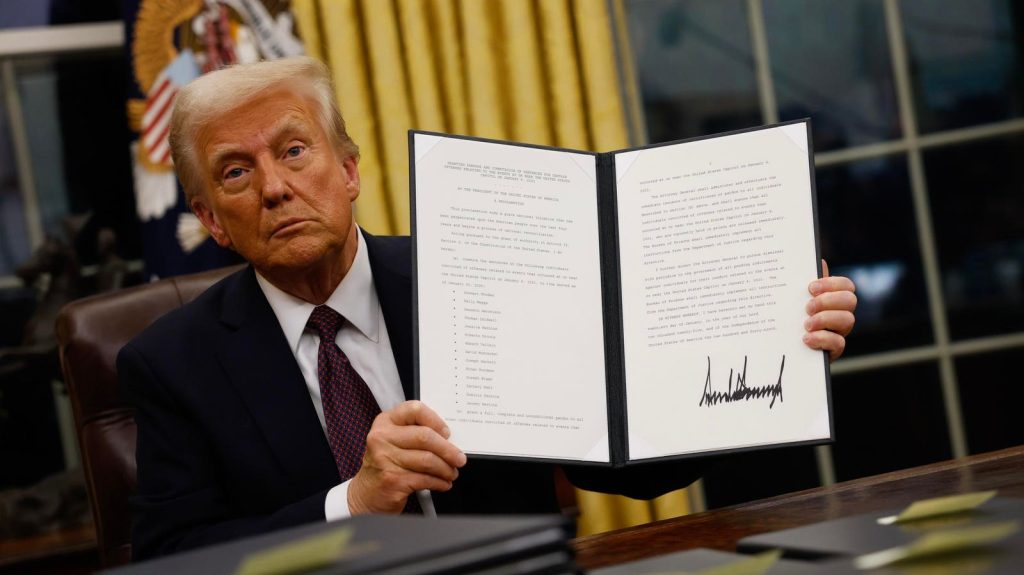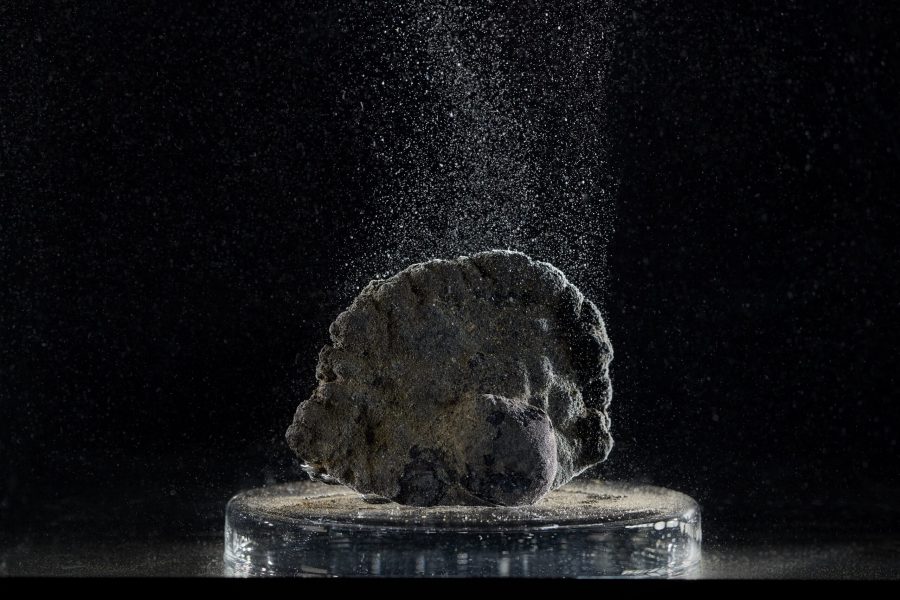Trump Renaming Gulf Of Mexico To ‘Gulf Of America.’ Here’s What He Can—And Can’t—Do. – Forbes

President Donald Trump on his first day in office signed an executive order calling for the Gulf of Mexico to be renamed the Gulf of America on federal documents “in recognition of this flourishing economic resource and its critical importance to our nation’s economy,” but Trump doesn’t have the authority to rename the body of water globally.President Donald Trump signs executive orders in the Oval Office on Jan. 20, 2025 in Washington, DC.The order signed Monday tells the Secretary of the Interior—Trump has tapped North Dakota Gov. Doug Burgum for the job—to change the name of the body of water in the country’s Geographic Names Information System database within 30 days.The move will trigger all federal agency maps, contracts and other documents to use the new name when referring to the Gulf, which borders roughly 1,700 miles of coast in each of the United States and Mexico.Trump’s order, titled Restoring Names That Honor American Greatness, also demanded the highest peak in North America, currently called Denali, be reverted back to the name Mount McKinley, the Alaska mountain’s name prior to 2015.Get Forbes Breaking News Text Alerts: We’re launching text message alerts so you’ll always know the biggest stories shaping the day’s headlines. Text “Alerts” to (201) 335-0739 or sign up here.An American flag is stuck in the sand along a beach of the Gulf of Mexico in Gulf Shores, Alabama.Yes and no. It’s within the federal government’s purview to change what landmarks are called within the Geographic Names Information System, but that’s an internal database that only impacts titles within the United States. The Office of the Secretary of the Interior does have the authority to change the names of American landmarks—former Secretary of the Interior Deb Haaland, for instance, targeted the names of hundreds of places that included “derogatory” terms—but it can’t change the names of things outside of the country.Other nations don’t have to go along with the switch. When Trump first suggested the idea, Mexico’s President Claudia Sheinbaum responded sarcastically and proposed that North America should be renamed “América Mexicana,” or “Mexican America.” Mexico’s refusal to use a different name will not impact Trump’s ability to have the body renamed on federal documents, but it likely means the new name won’t be officially used internationally unless both countries come to an agreement.It wouldn’t be the first time countries refer to the same body of water or landmark by different names. Texas and Mexico refer to the river that divides the two nations along the Texas border differently: Americans call it the Rio Grande and Mexicans call it the Rio Bravo. The body of water between South Korea and Japan is called the “East Sea” by South Korea and the “Sea of Japan” by Japan. The name for the body of water that borders Brunei, China, Malaysia, the Philippines, Taiwan and Vietnam—commonly known as the South China Sea—is also disputed. Some countries, like Vietnam, call it the “East Sea,” in China it’s the “South Sea” and other people in the region are advocating to call it “Southeast Asia Sea.” Even within the U.S. government, disagreements aren’t unheard of: Federal agencies generally refer to the crucial gulf between Iran and the Arabian peninsula as the Persian Gulf, but the military often calls it the Arabian Gulf—the name used by some of the U.S.’s top Arab defense allies, most of which are bitter rivals with Iran.Google Earth’s policy is to display the common name of a body of water based on the nations that border it. If all bordering nations agree, then the same name is displayed in every search and language. But if countries dispute the proper name for a body of water, the policy is to display both names, with each label placed closer to the country or countries that use it.Despite Trump claiming “we do most of the work there, and it’s ours” in reference to the Gulf of Mexico, international waters are not owned by any country. The U.S. has territorial control of the gulf extending 12 nautical miles from the coastline as established by presidential proclamation in 1988 and in accordance with the United Nations Convention on the Law of the Sea, and the U.S. claims sovereignty in the area from the airspace down through the water column and into the subsoil. Beyond that, however, the Gulf of Mexico is not under U.S. control.“It’s our gulf. The rightful name is the Gulf of America, and it’s what the entire world should refer to it as,” Rep. Marjorie Taylor Greene (R-Ga.) said earlier this month.One Community. Many Voices. Create a free account to share your thoughts. Our community is about connecting people through open and thoughtful conversations. We want our readers to share their views and exchange ideas and facts in a safe space.In order to do so, please follow the posting rules in our site’s Terms of Service. We’ve summarized some of those key rules below. Simply put, keep it civil.Your post will be rejected if we notice that it seems to contain:User accounts will be blocked if we notice or believe that users are engaged in:So, how can you be a power user?Thanks for reading our community guidelines. Please read the full list of posting rules found in our site’s Terms of Service.






